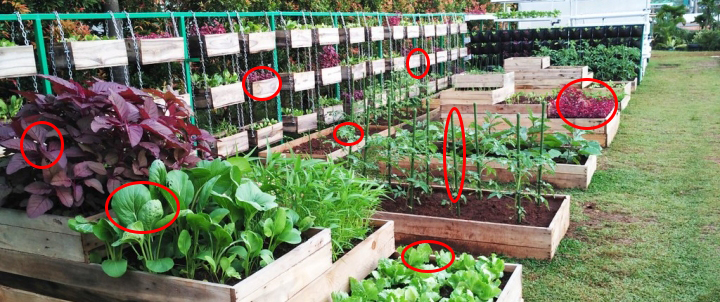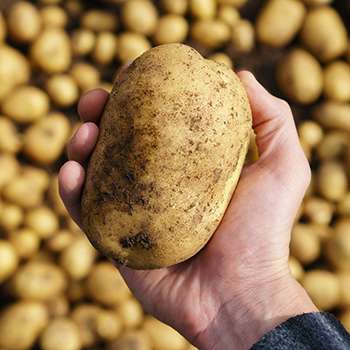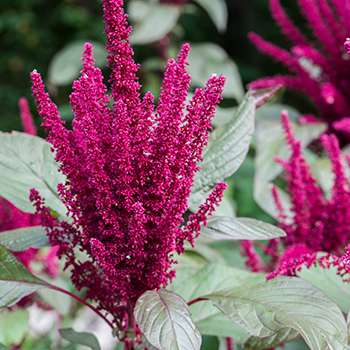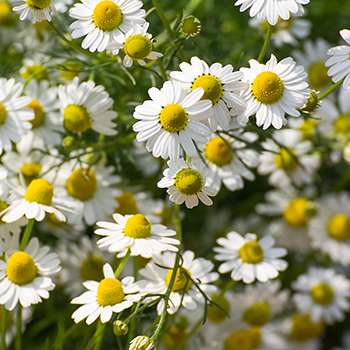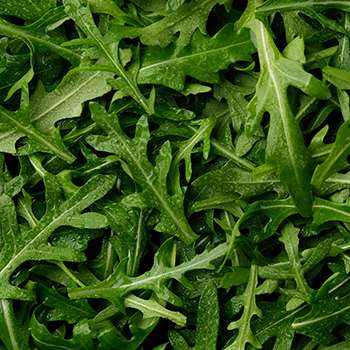When times are uncertain and dire, people turn to survival gardens. It is because a survival garden provides you with readily available and healthy food at low prices. Not just this, but it’s great exercise, an excellent way to boost morale, and fun activity too. It’s also a great way to take your mind off of your everyday stress.
When it comes to growing your survival garden, no crops are off-limits. However, some harvests are better than others because they are:
- Easier to grow
- Produce a harvest comparatively faster
- Rich in nutrition’s and calories
- Easy to store
It means that no matter whether you live in an apartment or boast a vast, urban food garden, you can grow these crops in your survival garden. The fruits, vegetables, herbs, and grains we’re going to discuss are dense in nutrition.
These boast properties that will boost your health during emergencies. Here we discuss in-depth what a survival garden is and what crops you should grow in your garden;
What is a Survival Garden?
A survival garden is a beautifully crafted garden designed to yield crops enough to feed you and your family during dire situations.
Your survival garden must provide you and your family with enough calories not just to survive but to thrive during times of need. On top of that, your survival garden should supply essential vitamins and minerals, carbohydrates, fats, and medicine.
Why Grow a Survival Garden?
Let’s first discuss why you should grow a survival garden. Here are some of the top reasons you should consider investing in a survival garden;
- Survival gardens offer you easy access to organic veggies that are superior to store-bought, conventionally grown food
- In your survival garden, you can enjoy growing various kinds of vegetables and fruits. In fact, you can grow diverse heirloom varieties that grocery stores often lack
- You have complete control over the environment of your garden. It means that you don’t have to worry about your vegetables and fruits containing harmful pesticides and chemicals
- In-depth research shows that about 48 million people get sick from food-borne illnesses per year, whereas an estimated 3000 die. Growing your crops ensures that you know precisely the source of your food. It, in turn, helps minimize the risk of food-borne diseases.
- Gardening is the perfect way to get quality fresh air, sunshine, and exercise. In fact, research shows that 45 minutes of gardening burns the same amount of calories as running 1.5 miles per 15 minutes.
What to Keep in Mind Before Starting?
When growing foods in your survival garden, you have a wide variety of options. However, before you plant your first seed, you need to have a well-thought-out solid plan. Your plan should account for details like;
- How many plants do you need to feed all the people in your family
- How much garden space is necessary for growing that number of plants
To get your answers, you need to calculate each family member’s daily nutritional and caloric needs. Moreover, remember that your level of activity may increase dramatically if you’re experiencing a survival situation.
On average, 2,500 to 3,000 calories per person is a great goal. In addition, make sure you grow food that you and your family will eat. You’ll only waste gardening space by planting something that no one likes. Focus on growing vegetables, fruits, and herbs you will enjoy eating on a routine basis.
Lastly, keep in mind that crops can fail due to disease or drought, or other reasons under the sun. For this reason, you need to think diversely; grow both perennials and annuals. In addition, have some trees, canes, and bushes for fruits, eat weeds and grow herbs.
What are the Best Crops to Grown in Your Survival Garden
Now let’s discuss which crops you should grow in your survival garden.
Beans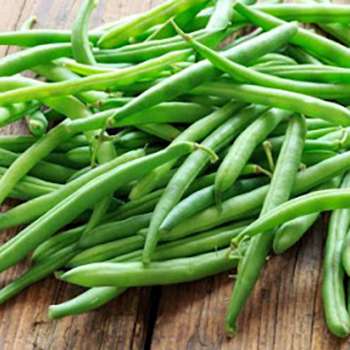
Well-known to be a survival staple, beans are considered to be one of the best survival foods. They are super easy to grow and are rich in vital nutrients, vitamins, and proteins. All of these are necessary for maintaining energy levels.
On top of that, beans are super versatile. This way, you can dry and store them for longer periods. Or you can simply pick them and eat them straight away.
Basil
Basil is a fragrant herb that helps spice up all your favorite dishes. This herb is rich in anti-inflammatory properties and antioxidants, eugenol, vitamin A, and magnesium.
Basil may also be used to relieve joint pain, reduce stress and anxiety. These are all great reasons to grow basil in your survival garden, especially during a crisis where your stress and anxiety levels are likely to be at an all-time high.
Cabbage
While not precisely high in calories, cabbage is rich in nutrients. Cabbage is rich in vitamins B6 and C and fiber.
Plus, you can cook cabbage in soup, throw it in a salad or cook it with potatoes to enjoy a wholesome meal. You can even bury it over the winter.
Potatoes
Potatoes are well-known for helping people survive a famine. This starchy root crop is super easy to grow and will last for a long time, if properly stored.
Simply plant your potatoes in five-gallon buckets or a bag. Once you harvest your roots, you’ll access delicious roots rich in carbohydrates, potassium, vitamin C, and vitamin B6.
Carrots
Carrots are one of the greatest crops to store during the winter months. If your garden boasts sandy and well-drained soil, you’ll be ready to start planting baby carrots.
Make sure you always store them in a refrigerator or root cellar after harvesting them. While carrots are not a ‘staple’ survival food, they still offer you vital nutrients and are a great side to most dishes.
Corn
Corn is another easy-to-grow grain that you can use to create different meals. Moreover, these are incredibly nutritious in combination with beans.
Keep in mind that it’s not a good idea to grow sweetcorn in your survival garden. Instead, you should choose grain corn and harvest it later on.
Amaranth
Amaranth refers to a gluten-free grain that offers protein, micronutrients, fiber, and antioxidants. This rich in fiber and nutrients reduces inflammation and lowers your cholesterol level.
Not to mention, this grain is the only one that contains vitamin C, magnesium, phosphorus, iron, vitamin E, and potassium. Furthermore, the leaves contain folate and vitamin A.
You can quickly grow amaranth throughout the year, and you can use its leaves all year round as lettuce greens. If you plant the grain during springtime, the wheat will sprout during the fall.
Berries
Mostly referred to as super fruit, berries are fantastic to add a burst of flavor to your dishes. These fruits are rich in potassium, vitamins A &C, fiber, Vitamin B-6, manganese, folate, and copper.
These fruits contain antioxidants that can help fight inflammation in your body. Since they lack cholesterol, they are heart-healthy and many of them are suitable for keto diets.
Berries are super easy to grow and can be of the following four types; blackberries, strawberries, blueberries, and raspberries.
Chamomile
This beneficial plant can help relieve stomach and menstrual pain. It can also aid in improving your digestion.
Furthermore, it can help treat infections, anxiety, insomnia, wounds, and cold symptoms. The medicinal properties of chamomile are necessary to help you survive a crisis.
Chamomile can be a little tricky to grow; however, once you establish it, you’ll find that it’s super easy to maintain. This drought-resistant plant is often used to keep vexing pests far away from your home.
Cucumber
Cucumbers contain excess water, making them an excellent source of fiber. Cucumber helps extract toxins from your body while providing you with nutritious vitamins and minerals like potassium, manganese, copper, vitamin C, vitamin B, and vitamin K.
Furthermore, cucumber can help battle inflammation in your body, freshen your breath, and cleanse your digestive tract.
Strawberries
These flavorful edibles are full of vitamins, fibers and rich in antioxidants. These fruits typically come back each year and may be of various types.
These are famous for protecting your heart, lowering your blood pressure, and guarding the body against cancer.
Arugula
Arugula is an exciting plant with a unique peppery flavor. Apart from its eccentric taste, the vegetable is an excellent source of vitamin C and vitamin K that helps make your salad taste all the better.
Depending on the region you grow it, arugula may perform as a perennial plant growing every year. Typically, the vegetable produces mature leaves every two months. You can cut it whenever you want to add it to a dish.
It’s always a good idea to cut arugula whenever you need it instead of cutting it and storing it in the refrigerator.
To Sum it Up
When it comes to growing crops in your survival garden, make sure you seek crops that are dense in nutrients and calories.
In addition, make sure they boast a relatively greater shelf life, are easy to harvest, and don’t upset your tummy.
How To Make Your Knife As Sharp As The Devil Himself
The Biggest Mistakes You Can Make In A Blackout (Video)
Ingenious Ways To Use Toilet Paper Rolls That You Never Thought Of
